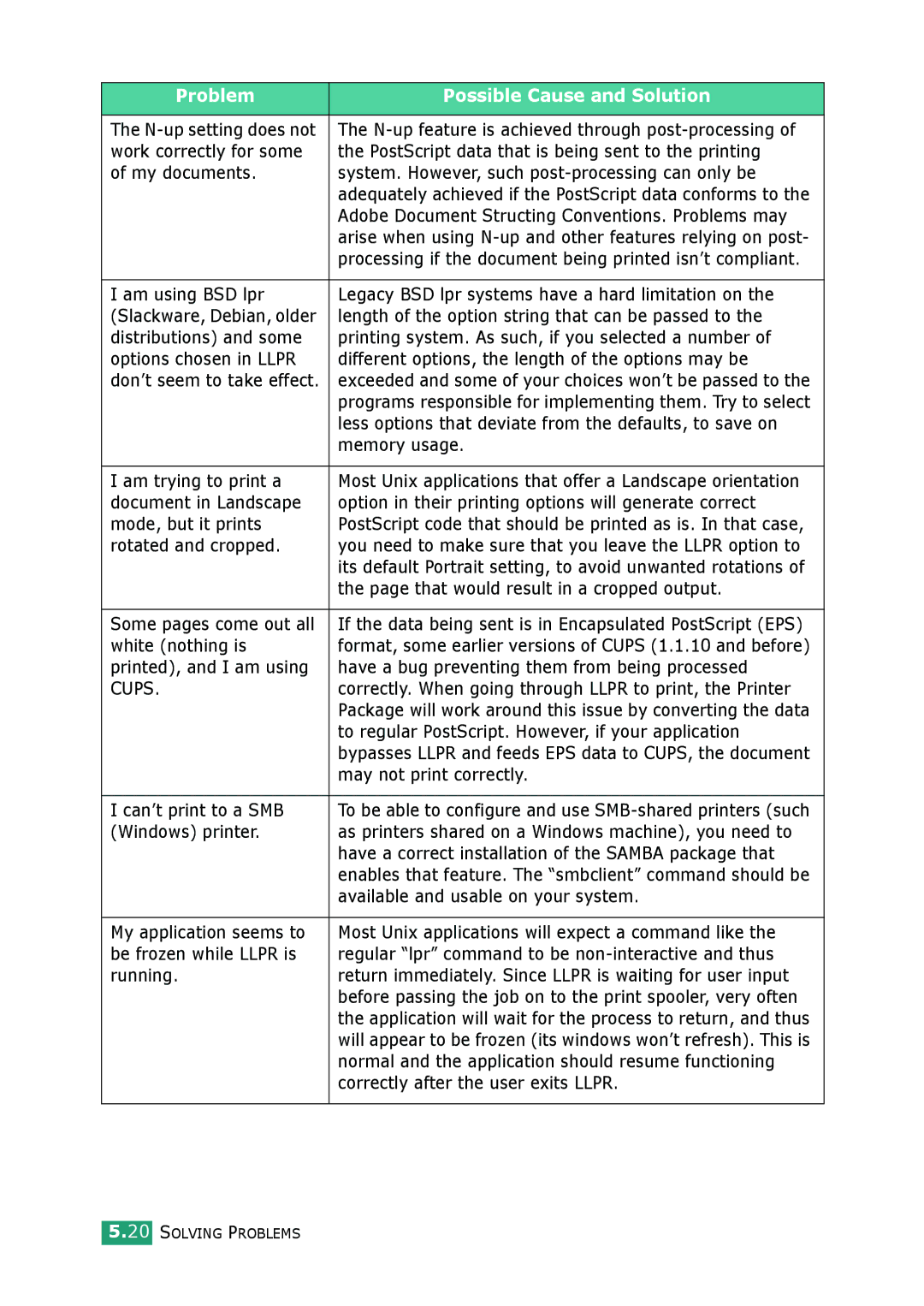Problem | Possible Cause and Solution |
|
|
The | The |
work correctly for some | the PostScript data that is being sent to the printing |
of my documents. | system. However, such |
| adequately achieved if the PostScript data conforms to the |
| Adobe Document Structing Conventions. Problems may |
| arise when using |
| processing if the document being printed isn’t compliant. |
|
|
I am using BSD lpr | Legacy BSD lpr systems have a hard limitation on the |
(Slackware, Debian, older | length of the option string that can be passed to the |
distributions) and some | printing system. As such, if you selected a number of |
options chosen in LLPR | different options, the length of the options may be |
don’t seem to take effect. | exceeded and some of your choices won’t be passed to the |
| programs responsible for implementing them. Try to select |
| less options that deviate from the defaults, to save on |
| memory usage. |
|
|
I am trying to print a | Most Unix applications that offer a Landscape orientation |
document in Landscape | option in their printing options will generate correct |
mode, but it prints | PostScript code that should be printed as is. In that case, |
rotated and cropped. | you need to make sure that you leave the LLPR option to |
| its default Portrait setting, to avoid unwanted rotations of |
| the page that would result in a cropped output. |
|
|
Some pages come out all | If the data being sent is in Encapsulated PostScript (EPS) |
white (nothing is | format, some earlier versions of CUPS (1.1.10 and before) |
printed), and I am using | have a bug preventing them from being processed |
CUPS. | correctly. When going through LLPR to print, the Printer |
| Package will work around this issue by converting the data |
| to regular PostScript. However, if your application |
| bypasses LLPR and feeds EPS data to CUPS, the document |
| may not print correctly. |
|
|
I can’t print to a SMB | To be able to configure and use |
(Windows) printer. | as printers shared on a Windows machine), you need to |
| have a correct installation of the SAMBA package that |
| enables that feature. The “smbclient” command should be |
| available and usable on your system. |
|
|
My application seems to | Most Unix applications will expect a command like the |
be frozen while LLPR is | regular “lpr” command to be |
running. | return immediately. Since LLPR is waiting for user input |
| before passing the job on to the print spooler, very often |
| the application will wait for the process to return, and thus |
| will appear to be frozen (its windows won’t refresh). This is |
| normal and the application should resume functioning |
| correctly after the user exits LLPR. |
|
|
5.20 SOLVING PROBLEMS
